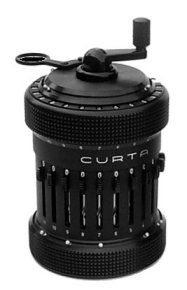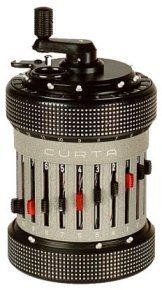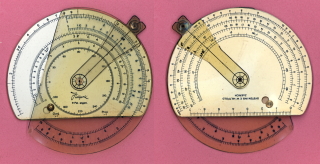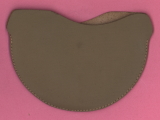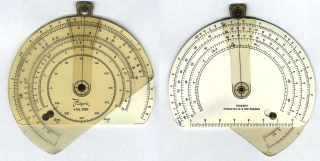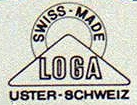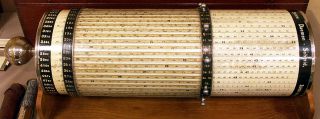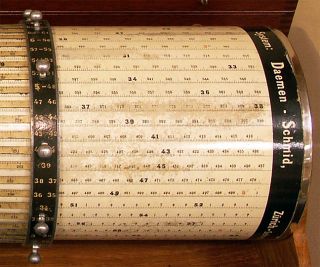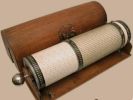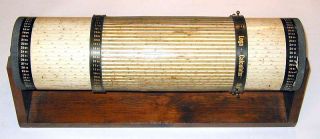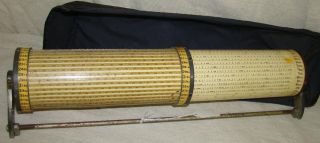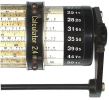Swiss Slide Rules on the World Market
by Heinz Joss
Note: Google was used to translate from the Swiss language and the ISRM curator provided additional editing.
In Switzerland, only a few brands have gained international recognition: The Company Billeter,
Daemen-Schmid, later renamed Loga, and National. In all presented the computing rollers in
Billeter and Loga is also the disc calculators, focuses on production and export, with these
two models, they occupied a niche market, and held their ground against the major foreign
manufacturers whose focus was in the production of slide rules. Loga alone claims to have
produced tens of thousands of computing rolls and sold around the world. - Was it a coincidence
that these producers all had their base in the Zurich area, or was it a consequence of the
importance of Zurich in the areas of trade, technology and science?
My collectors and researchers of recent years has led to me today dozens of names of Swiss people
and companies are known to have developed a slide rule or manufactured. Of international importance,
however, were only mentioned the Zurich brand.
7 From the history of the Zurich computing roller manufacturer
7.1 The Company Zurich Billeter and National
In posthumous works from the estate of the family Billeter is the silk factory Julius Billeter
(1828 - 1914) boards,-as the inventor of computer discs and rollers mentioned, these inventions
are dated to the period from 1879 to 1885.
Computing boards are a scarcely known another form of the slide rule: About a logarithmic scale,
arranged in many short, parallel and overlapping sections for calculation is a glass plate with
the same logarithmic scale units shifted horizontally and vertically. The calculation table is
the direct ancestor of computing roll. Calculation sheets of Bille Planters production remained
of my knowledge, only two received; their appearance and operation is also known from patents.
Julius Billeter founded in 1888 in Zurich a computing rolling mill, the first Swiss factory, which
specialized in slide rule. Julius' son Ernst Billeter (1858 - 1941) left enter in 1912 the company
in the commercial register, then he led the company with his brother Max 1917, they disbanded.
1916 Bernard Rubinstein founded in Zurich, the company "National computing rolling-stock company",
and nothing is known about him. In 1917 he resigned from the company, responsible for the nation
was now Max Billeter (1890 - 1967). In 1934, she was, after 18 years of service, closed.
1921, four years after the dissolution of the Ernst Billeter & Co., the company of his sons Ernst
jun. and Max, and five years after the founding of the National raking drums AG, which is now run
by son Max, the 63-year-old father of Ernst Billeter ventured again a new beginning: He founded the
company "Ernst Billeter-Bossert, fabrication of computing rolls and lightning calculators" ,
the company existed until 1942 (Fig. 3).
Of the business of the Company and the National Billeter-little is known. Only in the years
1937 to 1941 handwritten drafts of letters from Ernst Billeter are obtained that show the sale
of computer discs and rollers to many countries: Belgium, Denmark, Germany, England, France,
Ireland, Italy, Yugoslavia, the Netherlands, Norway, Austria , Poland, Sweden, Czechoslovakia,
Hungary and the United States are mentioned. Among the regulars dominated companies in the
textile industry (from the Billeter it myself came), but also banks, government, insurance, etc.
to have the disc calculators and rolls served and office equipment dealers were supplied as a
middleman. As of 1941, the foreign relations of the 2nd According went World War lost, and
the business fell asleep.
Of the products of the Company and National Billeter only a few specimens have been preserved.
Known computing boards, discs and rolls of Billeter, National, however, are only raking drums.
7.2 The Company Zurich Daemen-Schmid and Loga
(1856 - 1934) In 1896, the textile merchant Henry Daemen-Schmid emigrated from the then Prussian
Rhineland in Switzerland and settled in Zurich-Unterstrass. In a garret in Zurich in 1900, he
built raking drums, the oldest surviving examples bear next to his name, the words "reconstruction
after Julius Billeter," it was so obviously introduced intellectual property of Julius Billeter in
Daemen-Schmid's production.
1903 Daemen-Schmid moved to Zurich-Oerlikon, where he set up a specialized construction workshop
with its own lithography and Gravierabteilung, as he announced proudly. In 1911, he moved his
company headquarters to Uster, with a repeated extension of the production unit. The company
Henry Daemen-Schmid was changed in 1915 in the commercial register in Loga, Loga the term has
been used, however, on the products available from around the 1903rd
Henry Daemen-Schmid had nine children, most of them were either in the company or in related
fields working Loga (trade with computing devices of all kinds). Permanent Familienzwistigkeiten
but resulted in ever new constellations in the relations between themselves and the Daemen in and
to the company Loga.
Henry Daemen-Schmid was the all-powerful father of both the family and the company. After his
death in 1934, took over some of the Father completely estranged sons of the company, which was
in a serious economic crisis. A trust company, the attention of the shareholders - all members
of the family Daemen - the situation was assessed liquidated, the goodwill on the scrap value of
the machines. In the early 1970s, after a brief flight of the Loga but again fell into financial
difficulties. 1979 was the final out: The lack of a second pillar was the company's downfall.
The production of the company Henry Daemen-Schmid and Loga included slide rules, disc calculators
raking drums. The calculation were rolling up to the 1930s the predominant business. In an old
brochure mentions that already 30,000 Logawalzen would be in use, is in a different "There are
probably 1922 hardly a major bank in Budapest, Vienna, Berlin, Paris, London and New York, which
does not exchange roll the Ustermer served ". It was in the 1920s, even given a manufacturing
and sales subsidiary in Berlin. In the 1930s, the change in production of computers began
rolling on computer disks (Fig. 4 and 5).
7.3 Billeter / National and Heinrich Daemen-Schmid/Loga:
Similarities and relationships
To date, there is no clarity as to whether the two companies has ever passed a couples relationship.
Strikingly, however, are certain similarities. So were both founders (or Heinrich Julius Billeter
Daemen-Schmid) textile experts. Both sides alleged that the beginning of the activity in the area
of the slide rule had been the year 1888, which in either case can not be proven. Both were active
in the region of Zurich. While we think to remember the family Billeter, Henry Daemen-Schmid had once
been an employee of Billeter, which is in the family Daemen unknown.
Both Julius Billeter and Henry Daemen-Schmid have been posing as the inventor of the computer roll
and were later referred to by their offspring as such. Ernst Billeter has also decorated with this
attribute. Apparently all a patent on a computer was enough rolling detail in order to feel a
degree of calculation inventor roll as such.
Cylindrical slide rule but are mentioned in the literature before 1888, so that neither Daemen-Schmid
Billeter still can be regarded as the inventor of the computer roll, but they have contributed to
improvements of this device.
The time probably best-informed expert on the slide scene, the Switzerland-Americans Florian Cajori
(originally Cajöri), Professor of History of Mathematics and Dean of the University of California,
mentioned both 1919 Julius Billeter and Henry Daemen-Schmid and their raking drums. In any
relationship between the two Cajori but points not, as a contemporary he would have been aware of it.
7.4 Other names slide from the Zurich area
The Zurich astronomer, physicist and mathematician Johann Kaspar Horner (1774 - 1834) developed a
slide rule with scale length, probably a divided scale. Has yet been no object has been found. -
Horner was also admirable supporter of Schwyzers Felix Donat Kyd (1793 - 1869), who taught himself
probably mass-produced the first Swiss slide rules, they also are not obtained, but a detailed
description.
Leonhard Pestalozzi (1786 - 1864), banker, financial and monetary politician has tinkered for
personal needs one slide rule for currency conversion. Although this unit has only served him
myself, it has made in the slide rule literature. Also, this bar is not preserved.
Karl Culmann (1821 - 1881), professor at the ETH in Zurich devoted, in his famous "Graphic Statics"
a chapter of the slide rule, the time apparently were not very common in Switzerland.
Ludwig von Tetmajer, he was a professor at ETH, the initiator of a reprint of Culmanns "Graphic
Statics", he added, while the slide-section and was therefore also in the history of slide rules.
Hans Heinrich Peter (1875 - 1931) was the inventor of a double logarithmic scale computing staff
with tachymetric that he let himself finished first, but later figured the system as Peter in
offering Nestler.
Silvio Masera from Winterthur 1902 received a patent for a slide rule with continuous-scale band,
and he wanted to give the advantages of the slide rule slide rule, the scale self-contained.
Whether his slide rule ever built is not known, at any rate, no such bar was found.
GG Wilhelm Weber, Zurich, was a manufacturer of a slide rule topographic system Hofer & Brönnimann.
Walter Schaad, Zurich received in 1921 a patent for a slide rule with two Mantissenskalen, with
its help, and can be added subtracted what logarithmic slide rules otherwise can not really.
A company Emil Pfenninger & Co. in Zurich was either itself a manufacturer of slide rules or has
acted with such a still unidentified manufacturer.
Jacob Huber, Winterthur and Zurich, received in 1923 a patent for data slider. His company Normus
has become internationally known for its sliding tables. They were not real computer, but offered
for very specific purposes to be known figures as systematized work help.
Approximately of the same period comes a little slide rule Auto Meter P. Landis, Automobiles,
in Zurich. Its purpose was to convert between performance determined sizes of car engines (Fig. 6).
At the end of the 2nd World War II, as one might assume, the technical development of the
calculation of the rod and slide rule had been completed, the Zurich engineer Walter Hiltpold
came up with a new design, a semi-circular disc on the market (Figure 7). His tragic early death,
it is due to well that the idea could not enforce.
A slide rule of Rieter Textile, Winterthur is known.
Zellweger Uster AG has released a circular slide rule on the so-called Smith chart. Zellweger Uster
genannnt today, has further made textile grade rods and discs for customers.
Still available, the hydro-slide rule of George Kisseleff Küsnacht / ZH (Fig. 8).
The watch company Ventura Design on Time in Volketswil Zurich may be the only company that still
today produces slide rule, namely calculation watches, designed by Zurich designer Hannes Wettstein.
8 sources and literature
Jezierski, D. of. 1997 (2nd edition) 2000. Slide rule, a documentary - self-publishing, stone b.
Nuremberg 110, pp.
Joss H., 1998. Measurement Computing: 350 years slide rules - Elem. Math, Vol 53, 73-78
Joss, and H. 1998 (2nd edition) 2000. Swiss slide in the global market: The Company and National
Billeter and Daemen-Schmid and Loga. 4th in " International Meeting of Slide Rule Collectors,
conference report "- H. Joss, pp. 49 - pp. self-publishing, Dällikon, 90 - 58.
Joss, and H. 1998 (2nd edition) 2000. Swiss people, companies and brands from the past
and present of the slide rule. 4th in " International Meeting of Slide Rule Collectors,
conference report "- H. Joss, pp. 59 - pp. self-publishing, Dällikon, 90 - 66.
Joss H 2000th History of the slide rule - SI + A, 116 Pp. Vol. 356 - 363
Joss H., 2000. Computing rollers slide with the long scale. First in " Symposium on
the development of computing technology "- WH Schmidt and W. Girbardt, pp. 11-33 -
Ernst Moritz Arndt University, Greifswald, 120 pp.
Joss H., 2000. A Tablet Slide Rule by Julius Billeter - the Journal of the Oughtred Society,
Vol 9, No. 2, p. 27th
Schoeck Grüebler, E. 1998, (2nd edition) 2000. Felix Donat Kyd, a Swiss protagonist of the
slide rule. 4th in " International Meeting of Slide Rule Collectors, conference report "-
H. Joss, pp. 23 - pp. self-publishing, Dällikon, 90 - 30.
Wirz, P., 1998, (2nd edition) 2000. The semi-circular disc calculators Walter Hiltpold.
4th in " International Meeting of Slide Rule Collectors, conference report "- H. Joss,
pp. 39 - 48 - self-published, Dällikon, 90 pp.
Copyright © 2001 by Heinz Joss Dällikon
Author's address:
Heinz Joss, Certified. Architect ETH / SIA
Rain Ring 4
CH-8108 Dällikon
e-mail: ana_log[]gmx.ch
| 
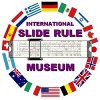 HOME
HOME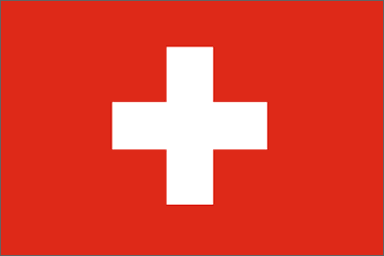
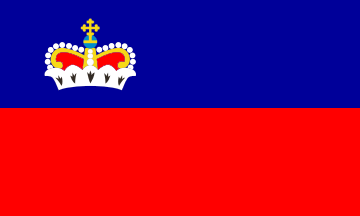 Swiss (Suisse) and CURTA Slide Rules
Swiss (Suisse) and CURTA Slide Rules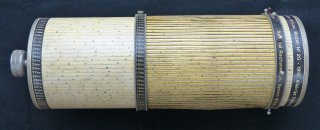

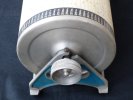

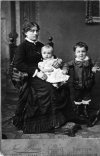
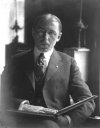
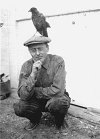



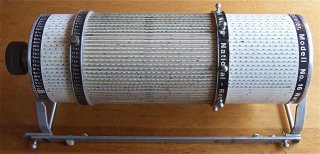
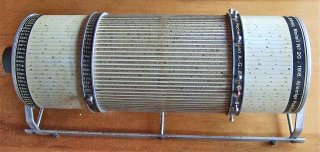
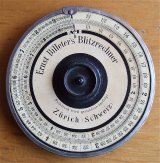
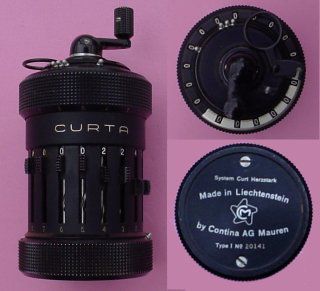
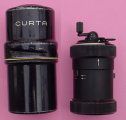
 Instructions (370Kb PDF)
Instructions (370Kb PDF)